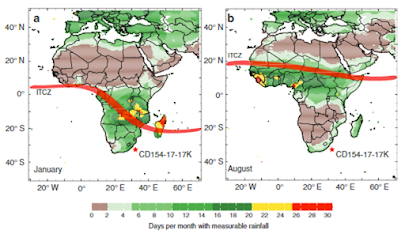Small Scale VS Large Scale Commercial Agriculture
Agriculture can form a central part of the economy for many African nations. An example is Sierra Leone and how 58% of its GDP is dominated by agriculture. Agriculture across Africa also varies in scale, power and size ranging from small scale subsistence farms to large scale commercial plantations. Currently, approximately 33 million small scale farms exist across Africa, contributing to 70% of Africa’s food supply. However, the presence and existence of medium or large scale farms between 5 to 100 hectares are also increasing, but they do not exist in the magnitude that small scale farms exist. Often, these large scale farms are criticised for not contributing to food security within Africa, but instead leaving disastrous environmental and social impacts in their wake.
Small scale farms
have often been seen as the drivers of growth across Africa, providing food for
local communities but also employing and managing a large labour force; 175 million people are directly employed by smallholder farms in Sub-Saharan Africa. They are seen to be very valuable where farmers possess knowledges of
local environments and climates, which inform their decisions on crop growth
and maintenance, but can also be used to create ‘climate-smart agricultural
innovations’ to support local communities and build climate resilience (Makate, 2020: 277).
Moreover, small
holder farms also use water less intensively in comparison to their large scale
counterparts, as farms are typically smaller than a hectare and often rely on precipitation
to grow crops. Small holder farms also create local irrigation technologies and
initiatives, such as furrow irrigation or using shallow groundwater in valley
bottoms to maintain their agricultural production (Woodhouse et al.,
2016). For some, they remain Africa’s main asset, whilst others contest them
and recommend the upscaling and commercialisation of agriculture.
To achieve
development goals and further increase economic growth, some believe that there
is a need to shift focus and resources away from smallholder farms and
re-direct these efforts to create opportunities for ‘megafarms’ to increase
productivity (Collier and Dercon, 2014: 99). Whilst these large scale farms may
possess scientific knowledge or receive greater funding than smallholder farms,
empirical evidence shows that they can actually have dire consequences on local
environments and small scale farmers. In order to make space for these large
farms, deforestation is a process that usually occurs which reduces tree cover directly.
9.4% of trees were lost in Mozambique between 2000 and 2015 as a result of large scale farms (Zaehringer et al., 2021). Large scale farms have also been accused of ‘water
grabbing’ or trying to secure control of local water resources such as rivers,
lakes or aquifers and reduce flow and access to local communities and small
scale farmers (Breu et al., 2016). Whilst these large scale farms may be
useful for improving global food security, they pose risks for local food
security by outcompeting other farmers. Thus exists the high controversies of adopting
commercialised large-scale farms in Africa.
Following
Schumacher’s (1973) message of ‘small is beautiful’, perhaps small scale farms
are Africa’s best solutions to maintain food security and local environments. Large
scale farms and the commercialisation of agriculture is something that will be observed
more in the future, but to reduce their consequences and make them tools for
positive change, owners should work with local people and their knowledges to understand the geology and geographies of environments and support local food security.



Comments
Post a Comment